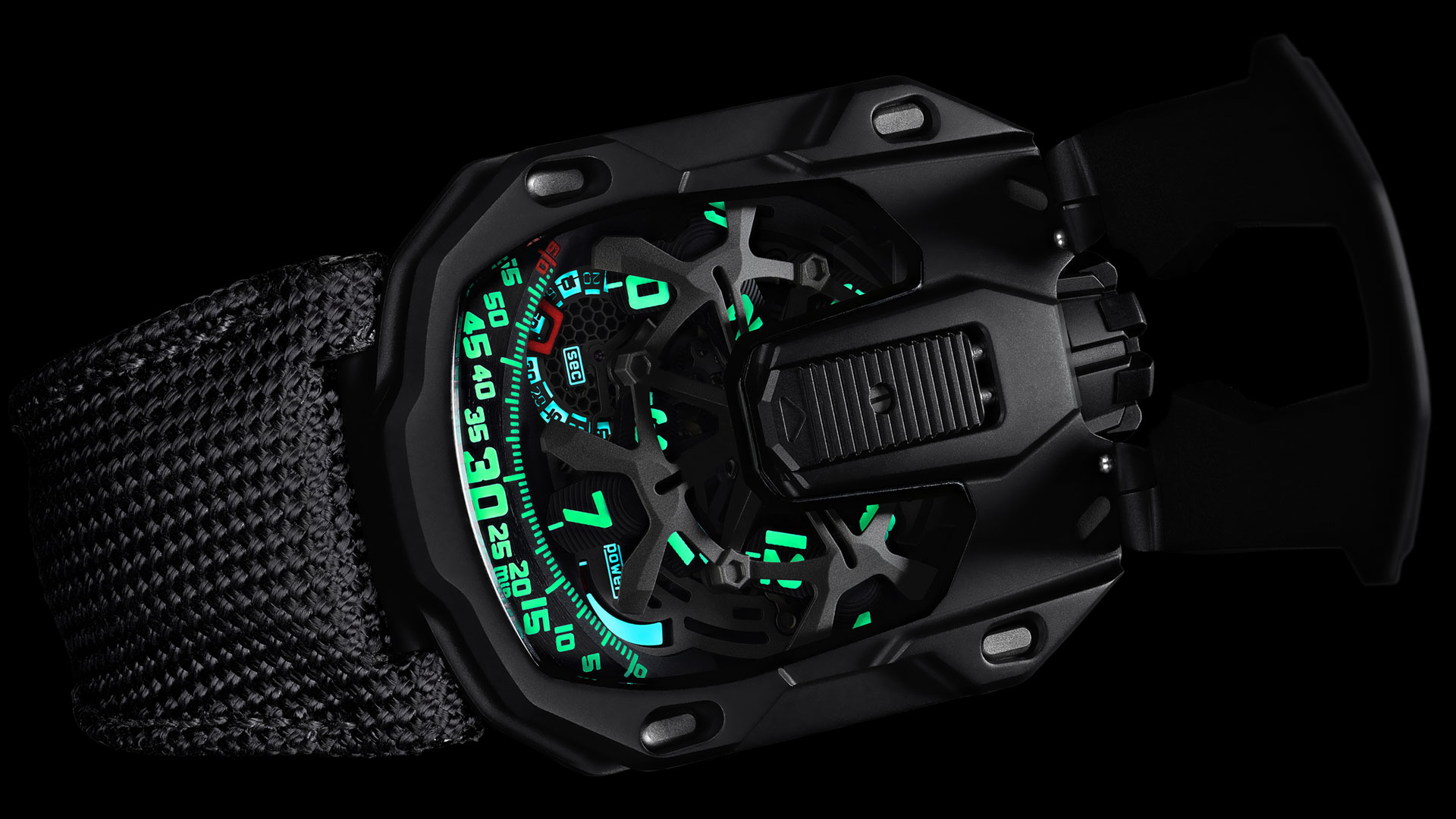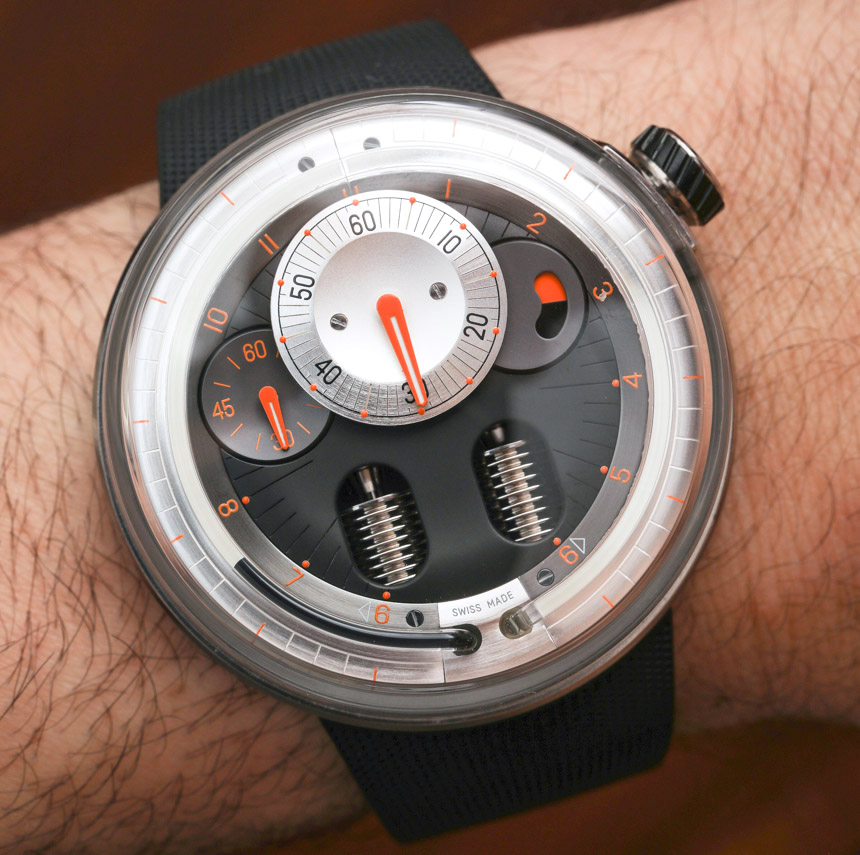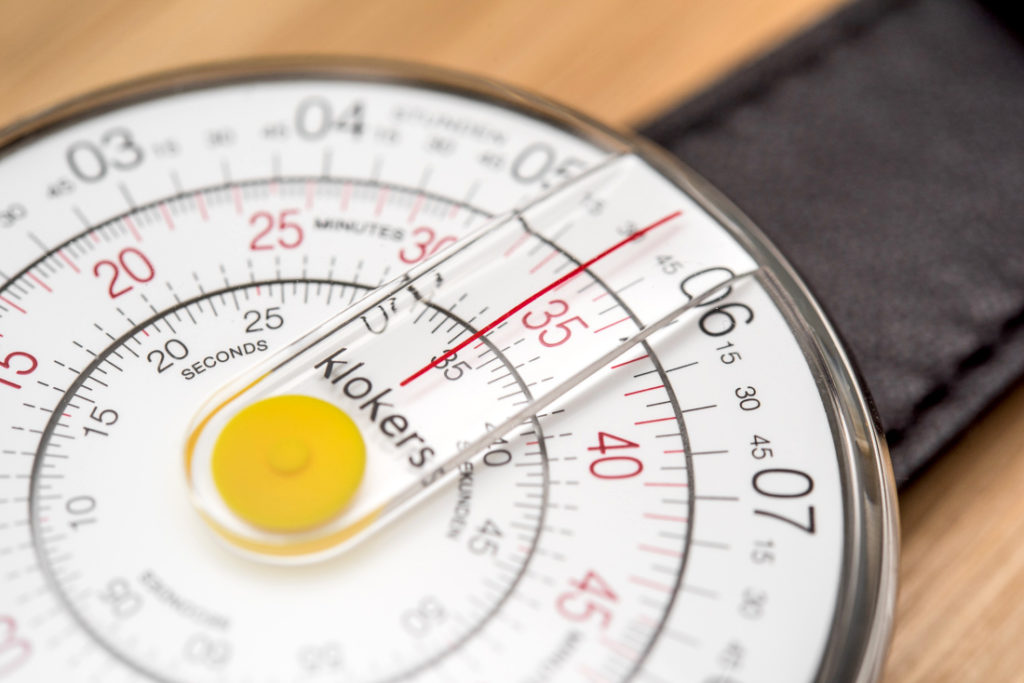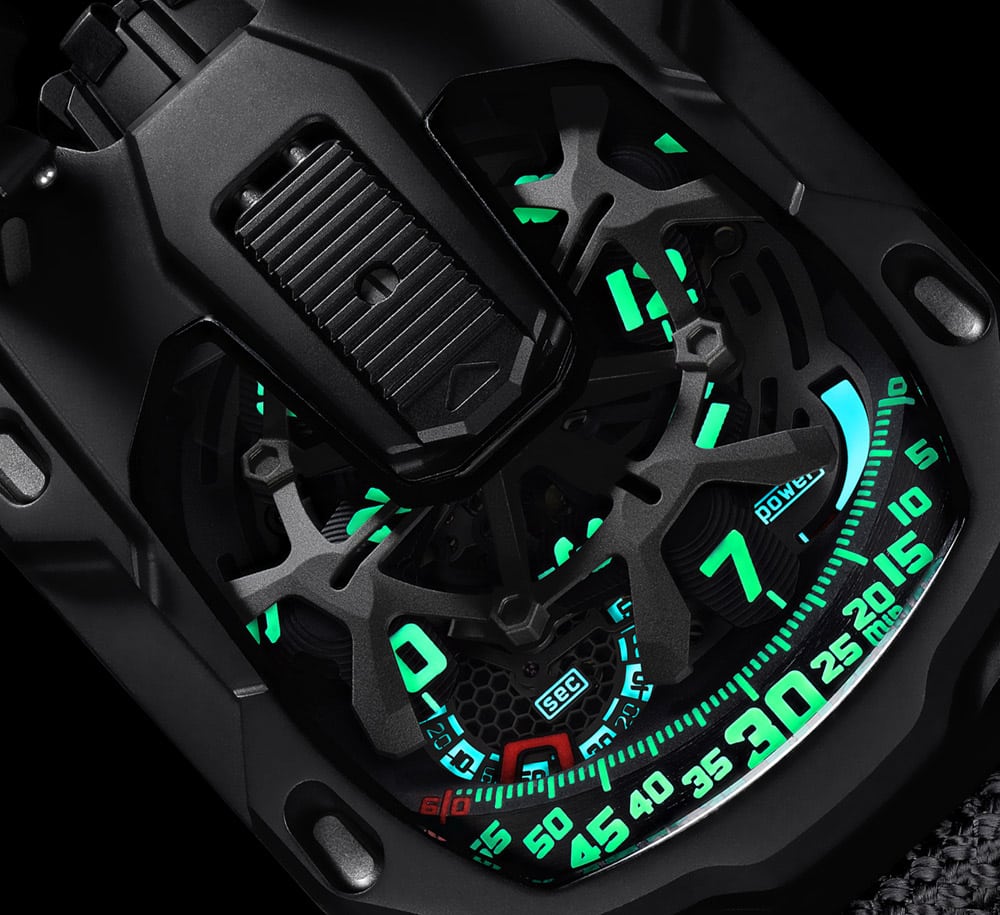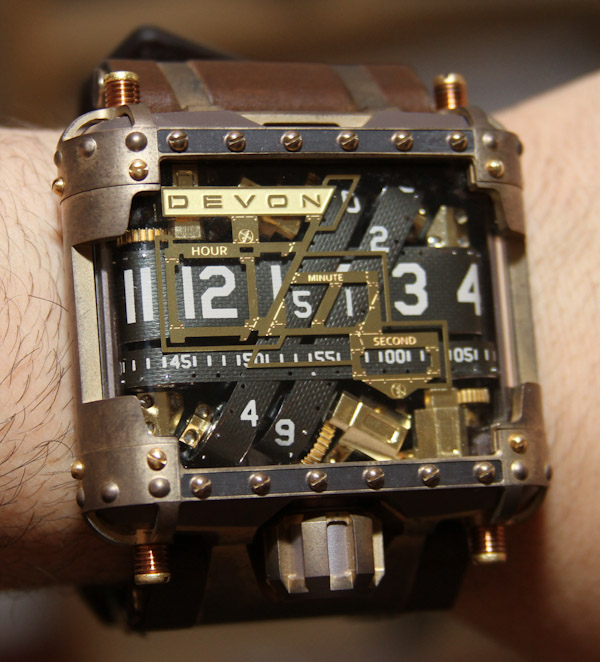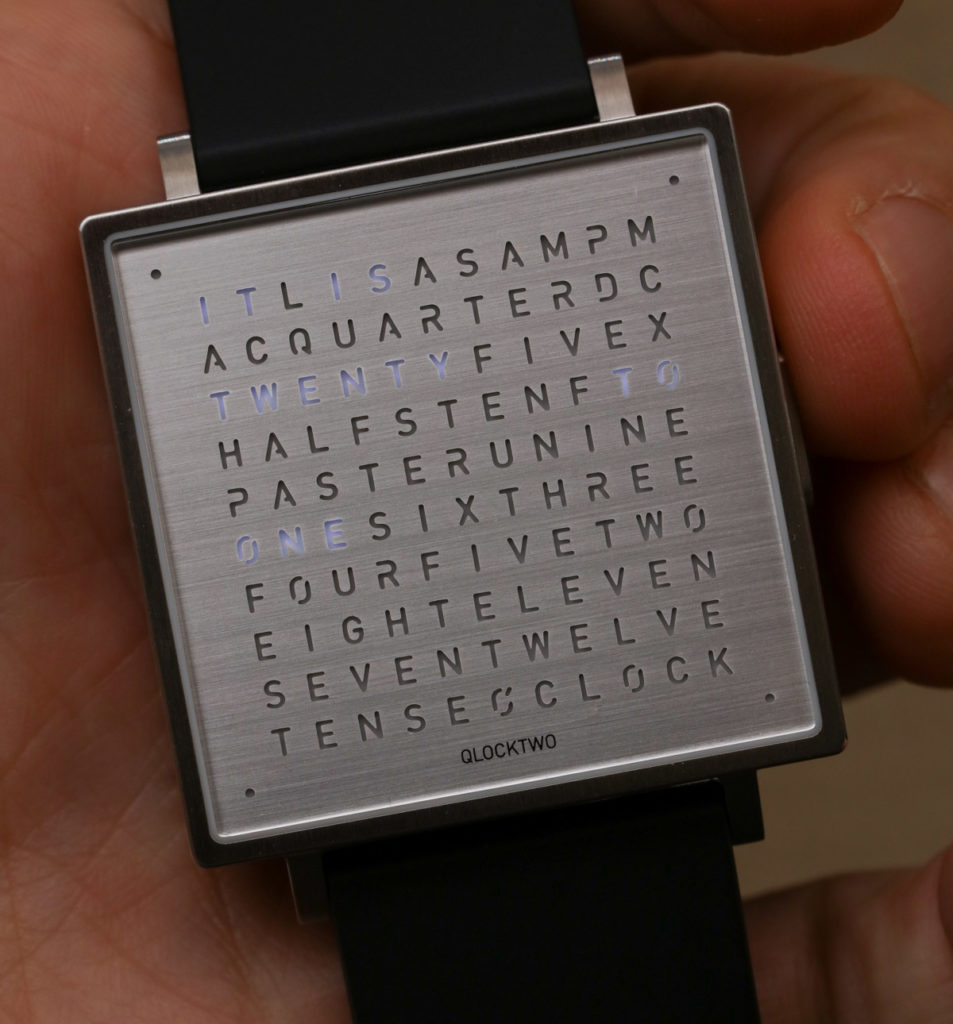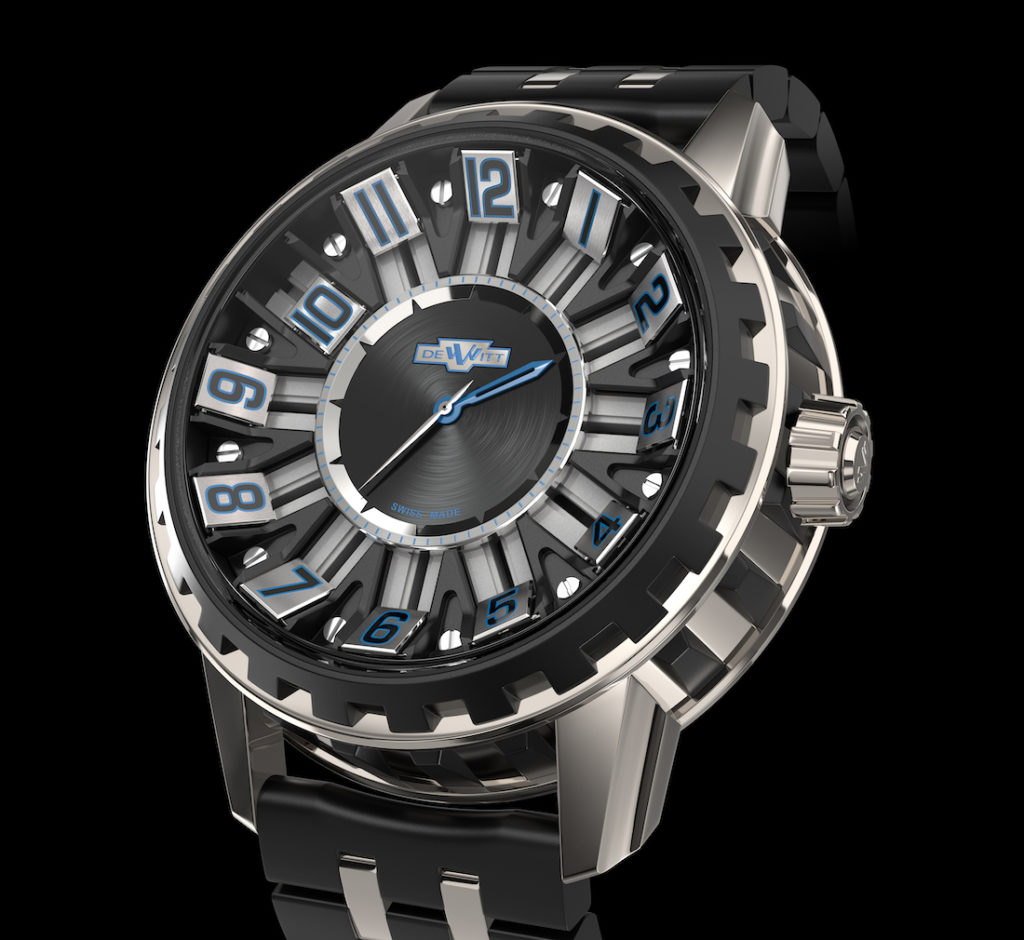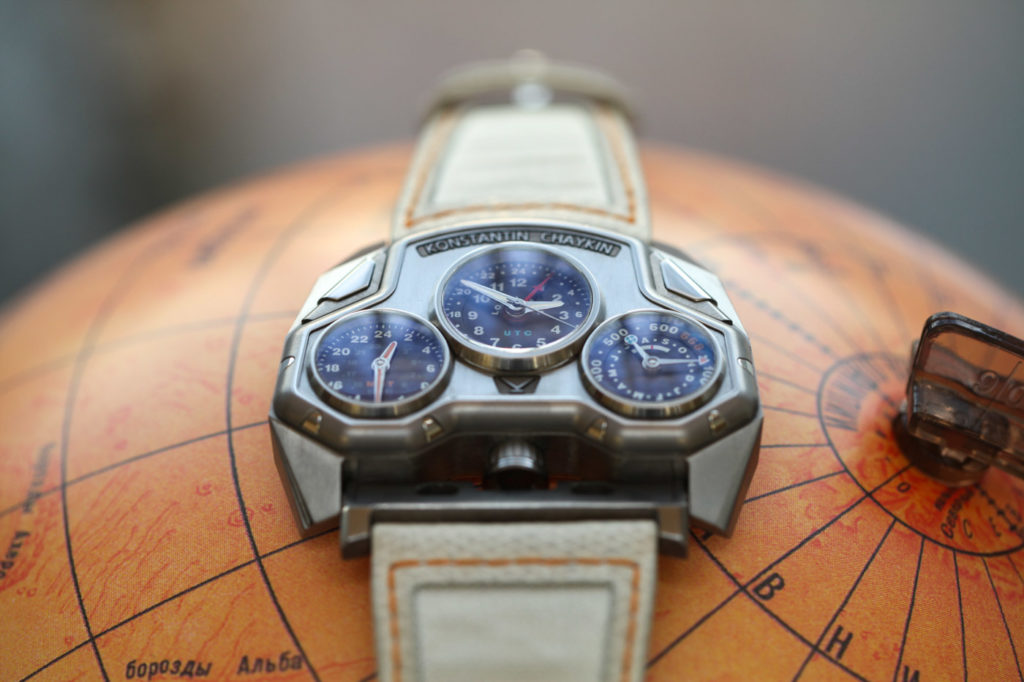Take a look at your wrist and, chances are, the way you’re reading the time is the same way humans have been doing this simple act over the past five centuries: looking at circular dial with hour markers along the periphery, hands sweeping out from the center indicating hours, minutes, and likely seconds. Sure, we might find slight variations on the theme in terms of a sub-seconds register, 24-hour dial, jump hour (where hours are displayed digitally), or regulator (where the hour is displayed in its own register), but generally speaking, most modern watches rely on the same basic format for reading time.
Hop in a time machine and travel back a few hundred years, and the locals could easily read the time on your watch. Travel back further, say 3,000 years, and I’d argue that the townsfolk used to telling time on sundials could parse out how to read your watch pretty quickly. I’m no psychologist, but it’s hard not to think that this circular format, displaying the smooth sweep of time throughout the day (just as the sun, moon, and stars sweep across the sky), appeals to something deeply rooted in our neurobiology. And hey, if it works, why mess with it? For the same reason we humans do most things: not because we need to, but because we can!
Though the way in which we tell time has remained relatively unchanged over the centuries, that’s not to say there haven’t been some major revolutions in time-telling. Digital displays on watches, ultimately deriving from Joseph Pallweber’s jump-hour pocket watch unveiled in 1883, were certainly a major departure. A century later, Pallweber’s design took on new life as digital quartz watches with LCD displays became nearly ubiquitous — accurate, cheap, easy to read, and nearly indestructible, an appealing formula. The popularity of Casio G-Shocks, fitness watches, and (dare I say) smartwatches speaks to the lasting influence of digital time-telling.
So, what will be the next major revolution in time-telling? Hard to say, but the watches below provide some fascinating examples of what’s possible outside the traditional modes of telling time.
HYT H0
HYT takes the concept of the fluidity of time quite literally. While the central minutes display and sub-seconds register at 9 o’clock are traditional, circular motifs, the hours display is where things truly get interesting. HYT utilizes a highly-modified mechanical movement to power two baffles that control the passage of fluid through a capillary running along the periphery of the dial. The position of the fluid acts as an hour display indicator, resulting in a watch that is at once familiar and legible, but visually fascinating. There’s little in the way of subtlety with the HYT H0, coming in at 48.8mm, and nearly 18mm-thick, but the watch remains surprisingly wearable (see the full review here). It’s priced at $39,000 and you can learn more here.
Klokers K-01
Klokers, which first debuted on Kickstarter back in 2016, described the KLOK-01 and 02 as “machines to travel through time.” Not a bad description, considering the watches are reminiscent of a slide rule from the 1950s. Though I personally couldn’t use a slide rule to save my life, reading time on the KLOK-01 is surprisingly easy. Direct your eyes along the 12 o’clock axis, and three rotating rings move to display the time; hours are shown along the top ring, minutes on the central ring, and the seconds along the inner-most ring. Besides being visually interesting (especially to those nostalgic for the days before calculators), reading the time is quite easy since your eyes need only travel down a single axis rather than search across a two-dimensional surface for each hand. The Klokers K-01 is powered by a Swiss quartz movement and measures 44mm, but the size is tempered by a lugless design.
Christophe Claret X-TREM-1
The Christophe Claret X-TREM-1 (or Experimental Time Research Engineering Mechanism) utilizes two floating stainless steel balls suspended in sapphire crystal tubes on either side of the dial to display the hours and minutes — essentially, a modern interpretation of mystery hands. Perhaps the coolest part is that Christopher Claret manages this feat by using magnets attached to surgical silk threads moving on hidden tracks powered by the caliber FLY11 movement with flying tourbillon. Wait… magnets? Indeed. Most watchmakers go to extreme lengths to minimize the effects of magnetic fields, as they can disrupt the operation of mechanical watches. However, because the magnets employed in the X-TREM-1 are so specialized and focused, they don’t disrupt the movement itself. As you might expect, the Christopher Claret X-TREM-1 will set you back a pretty penny, with prices starting at 264,000 CHF. Learn more here.
URWERK UR-105
How do you even choose which URWERK watch to include on this list? Seriously, every URWERK watch looks more like a sci-fi movie prop than a contemporary luxury mechanical watch. I went with the UR-105, which I personally think would work perfectly on Lieutenant Ripley’s wrist were Alien made today. The UR-105 uses the brand’s signature satellite indication for the hours; this mechanism works through the use of a carousel of four satellites, each of which has three numerals bearing the hours that spin independently (think of the Disneyland Mad Tea Party teacups ride — better yet, watch the video). The current hour sweeps right-to-left across the minute rail at the bottom, indicating the minutes and displaying the time in a surprisingly easy-to-read manner for such a complex watch. The UR-105 will set you back roughly 65,000 CHF (depending on the model), and you can read our full review and visit Urwerk’s website here.
Devon Tread
Speaking of watches and science fiction, The Devon Tread was worn by David Tennant’s character, Crowley, in the recent TV adaptation of Neil Gaiman and Terry Pratchet’s Good Omens (author’s note: fantastic book and TV series). Why a demon needs a watch is fair question, but it’s a surprisingly good fit with Crowley’s 1933 Bentley, so maybe it’s just about style. While the digital display of time is easily readable, it’s the way in which changes in time are accomplished and displayed that makes the Tread so interesting. Driven by a series of time belts (perhaps this would have been a better watch for another David Tennant character), the hours, minutes, and seconds each move on independent belts that traverse the body of the watch with the current time framed in a series of windows. The result is a fascinating mix of elements that evoke thoughts of film cameras, tank treads, and steampunk engines, and yet is derivative of none of those. The Tread 1 was nominated for the Gran Prix d’Horologie de Genéve in 2010 for the ingenuity of its design. There’s simply nothing else like it. The Devon Tread 1 retails for $15,000 and you can read or hands-on piece here and visit Devon’s website here.
Eone Bradley
In the world of watch collecting, it’s all too easy to forget about the primary purpose of watches — telling time. For those who are visually impaired, a time display hidden behind a crystal is about as useful as the Haldimann H9 Reduction (a 150,000 CHF “watch” with a completely black sapphire crystal). Eone solves the problem of telling time without relying on visual cues by producing a tactile display with raised hour markers and a rotating steel ball that moves along an inner track powered by a Swiss quartz movement. The end result is a minimalist piece of sculptural wrist art that can work for anyone, visually impaired or not. The Eone Bradley starts at $285. Read our full review here and visit Eone’s website here.
QLOCKTWO W39
You won’t find hands of any sort on the QLOCKTWO watch, nor will you find numerals in any form. At first glance, the dial looks more like a one-time pad used for cryptography, as it is comprised of an 11×10 grid of letters. Push the button on the side of the case and you crack the cipher; a set of letters illuminates, spelling out the time (quite literally). So, rather than attempting to quickly convert hand positions to words when asked the time, you simply read the words on the dial: “IT IS HALF PAST EIGHT” or “IT IS FIVE TO ONE.” Multiple pushes of the side button display the calendar day, seconds, and energy reserve (estimated battery life is one year). The QLOCKTWO watch is available in 20 languages; prices start at $990 and you can learn more here.
H. Moser & Cie Swiss Alp Concept Black
Oh, H. Moser & Cie, of course you’d find a way to make it onto this list. At first glance, the H. Moser’s Swiss Alps Concept Black looks like an Apple Watch with a tourbillon — and no hands. But despite H. Moser’s penchant for the absurd, the Swiss Alp Concept Black actually can tell the time, albeit via a minute repeater, making time-telling an auditory, rather than visual, experience. Want to know the time? The only way is to pull the slide and hear the gongs chime the time. The Swiss Alp Concept Black is housed in a platinum case and will set you back $350,000.
DeWitt Academia Slide
Anyone remember riding the Gravitron as a kid? It’s the UFO-shaped amusement park ride in which you stand against a pad along the circular interior. The Gravitron begins to spin and centrifugal force plasters you to the wall. Just as you try to move your arms out in front of you to test your strength against physics, the pad shoots up to the ceiling with you still stuck firmly to it. I’m not saying that the Gravitron was the inspiration behind the DeWitt Academia Slide, whose sliding hours, um, slide toward the center of the dial to display the time, but it was the first thing that came to mind when I saw it. To be fair, it’s not a major departure from a traditional display, but its execution is so fun and playful that I simply had to include it here. The DeWitt Academia Slide retails for 52,000 CHF and you can learn more here.
Konstantin Chaykin Mars Conqueror Watch
Sure, the display of time is pretty traditional on this watch, but I couldn’t leave it off the list because Konstantin Chaykin isn’t just displaying local (Earth) time with the Mars Conqueror Watch. The left register also displays local Martian time, while the right register displays the relative positions of the two planets and their oppositions. This is by no means the first watch to display Martian time (see our in-depth article here), but it does so with a flair and style that could only come from the creator of the Joker watch. As with many of Konstantin Chaykin’s watches, getting your hands on one is a challenge and, at the time of this writing, no price is available. Two-thirds of the displays offer no practical utility whatsoever in my life, but man do I want one!


